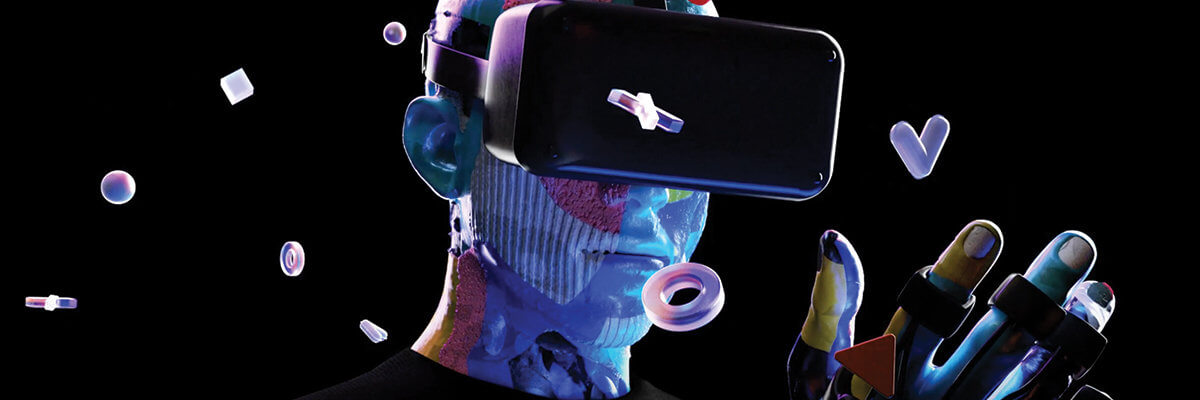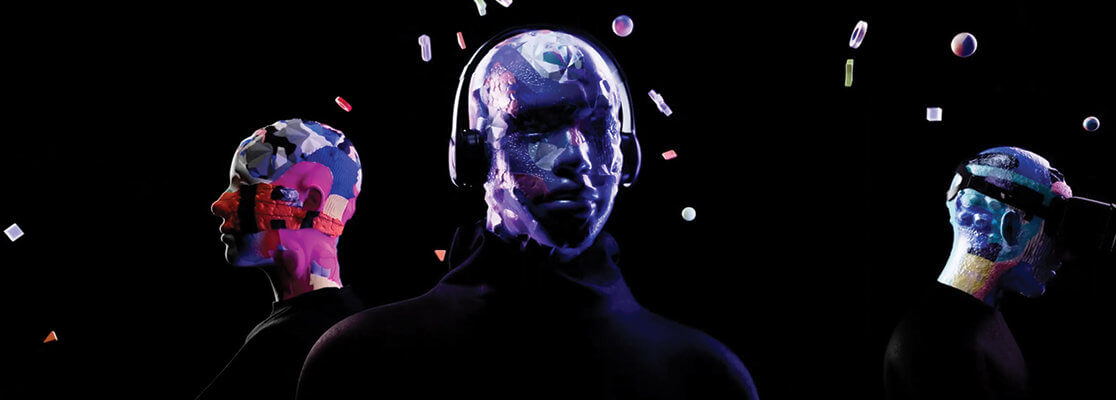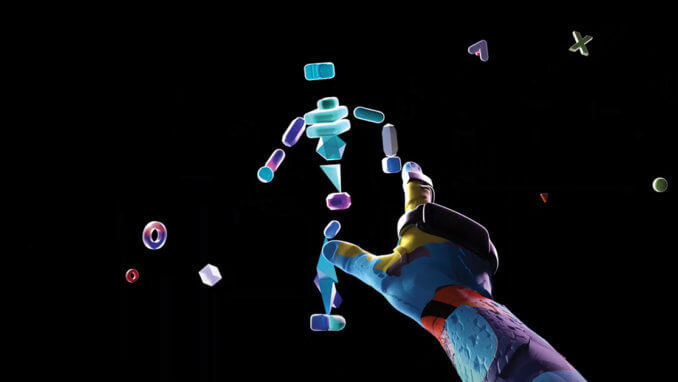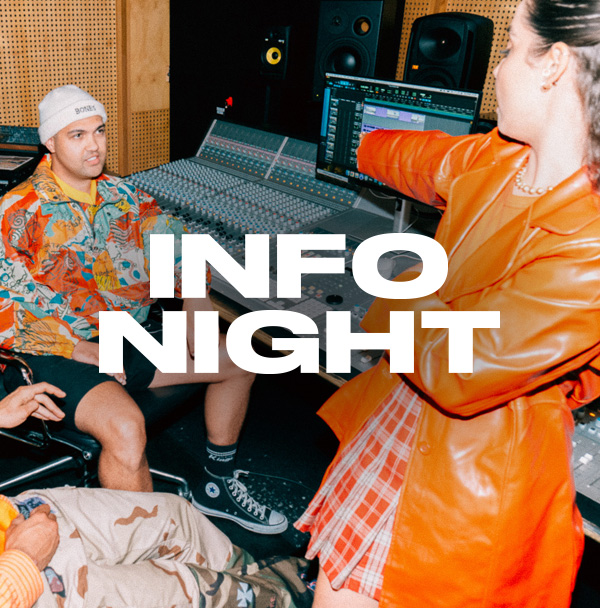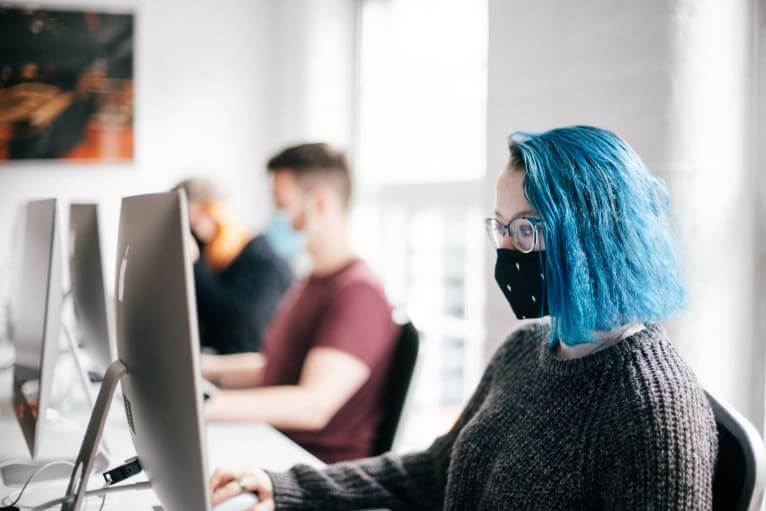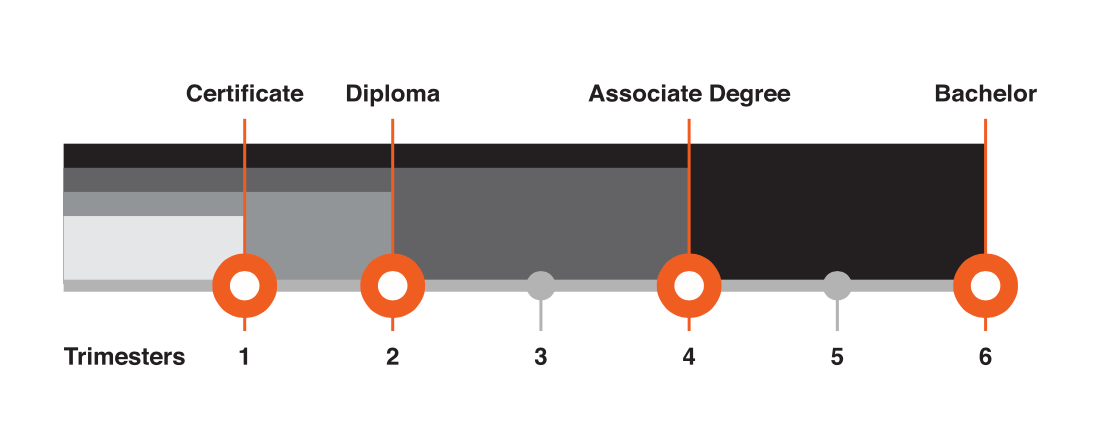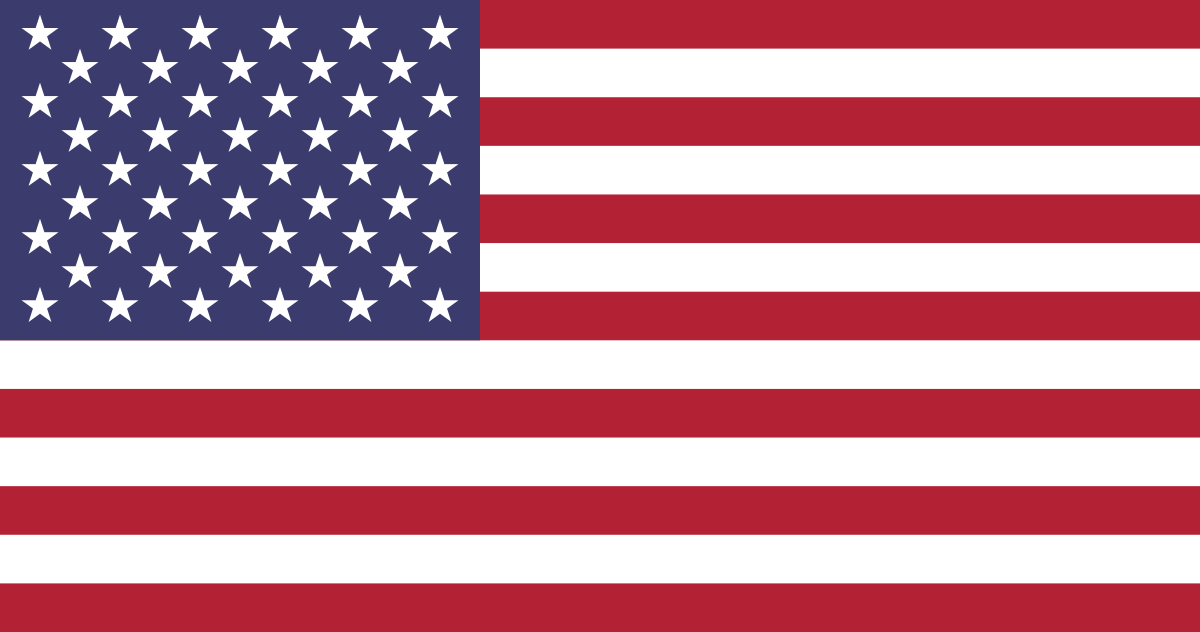Bachelor of Design & Visual Communication
THE PATH TO YOUR DREAM DESIGN JOB IS LAID OUT RIGHT HERE
Online Delivery (Domestic students only)
Built for independent learners who need maximum flexibility without compromising on engagement.
- 2 hours of live online classes plus 1 hour of national content each week.
- Fully virtual with interactive sessions, discussions, and expert support.
- Access SAE’s full suite of digital learning resources from anywhere.
National Expertise
No matter how you study, you’ll learn from SAE’s national team of expert, industry-aligned faculty.
- Access top educators and specialists across Australia, wherever they’re based.
- Benefit from national masterclasses, guest lectures, and collaborative learning.
- Tap into deep industry knowledge that goes beyond your local campus.
Units x Costs ($AUD)
20 x $2,999
2 x $5,998
Annual Course Fee (Indicative)*
(based on 1.0 EFTSL**)
$23,992 AUD
Plus Student Services and Amenities Fee (SSAF)
* The Annual Course Fee (Indicative) is charged against individual units of study which may increase from time to time and does not take into account personal circumstances such as RPL, credit, repeats and some specialised electives.
** EFTSL (Equivalent Full-Time Student Load) is a measure of a full-time student’s study load for a year. A full-time study load equates to 1.0 EFTSL. Typically, a full-time study load at SAE is 8 units of study over the year, each with an EFTSL value of 0.125.
For more information view the SAE Fee Schedule or visit the Fees & Payment page.
Complete your course faster by studying units across 2 years (6 trimesters).
Complete your course faster by studying units across 2 years (6 trimesters).
Complete the study units across 2.5 years (8 trimesters).
Whilst still classified as a full-time study load, you will complete course units over a 3 year period (9 trimesters).
If you want to take a little longer, that’s ok too. We’ll help you work out the best study load to suit your needs.
Note: Part-time is not available for international students.
February 2026
May 2026
Your creative career starts with SAE
Course Structure
The Bachelor of Design & Visual Communication is broken up into three distinct stages, each designed to develop different skills.
In this unit, you will learn about the ideas and concepts of design. You will discover the art of presenting and defending a point of view in a convincing and effective way by referring to valid and trustworthy sources of information. Thinking about and referencing the work of others helps you to develop critical thinking skills. By using tools on the internet and working with others you will expand what you alone can achieve. In your projects, you will delve into the history and language of the design industry in order to develop an understanding of your place and purpose within it.
In this unit you will learn about the principles of design through creating vector graphics in the form of motifs, pictorial marks and logos using Adobe Illustrator and other tools. Project briefs and activities in this unit introduce the principles of design; these are visual rules that can be applied in the creation of any image to enhance their impact, attractiveness and ability to communicate. The principles of design are useful and essential to your ongoing design practice
In this unit you will learn about illustration and the creative and technical production of digital images using photoshop and other tools. Working by hand and digitally you will explore a range of drawing techniques and tools including processes of iteration and refinement. You will investigate visual storytelling through the development of a series of images. Storytelling through your creative practice is essential to your ongoing design practice.
In this unit you will learn about designing page layouts for print through the combination of images and type. Your work will include the design of posters, brochures and flyers. You will investigate historical design styles; analysing, adapting and applying these styles in your work. You will explore the typographic art of arranging letters and words to make copy easy to read, visually appealing, and stylistically appropriate. Knowing how to use typography and layout effectively is essential to your ongoing design practice.
This unit explores the concepts of entrepreneurship, innovation and project design. You will develop approaches to identify promising opportunities and actionable strategies to transform them into tangible successes. Through exposure to developing new ideas, processes and ways of working - both individually and in entrepreneurial teams - you will hone skills to put creative ideas into practice and achieve real-world impact.
As Alan Kay explained, "The best way to predict the future is to create it", so let's get at it!
In this unit, you will learn to understand the user or target audience as part of your design process through exploring UX (user experience) and UI (user interface) design. By applying UX design tools such as personas and user journeys and UI design such as prototyping, iterating and testing, you will explore creating websites or apps that provide an ideal user experience. Knowing how to do user research and design digital interfaces effectively is essential for a contemporary designer.
This unit will simulate being in a real-world studio. Your designs will respond to larger project briefs with multiple deliverables, and you will engage in teamwork. This means time management, communication and scheduling will be crucial. You will learn to consider projects strategically in terms of your client’s brand or identity, and how these can be communicated visually and through associated text and structures. You are encouraged to explore and seek out new contemporary methods and tools for design and communication.
In this studio setting your facilitator will act as your project manager, producer, mentor and colleague.
This unit will be holistically assessed based on the criteria outlined in the unit guide. Teamwork, collaborative skills, and engagement with specific feedback processes are emphasised in this unit, as you further refine and reflect on a set of Transferable Skills.
Creatives have always contributed to real-world problem solving, whether through innovative inventions, creative calls for action, public awareness building, or art and science collaborations. In this unit you will use your interdisciplinary collaboration skills to address a real-world problem. Using different theoretical frameworks within a ‘hackathon’ style studio environment you will produce a prototype that can be presented within SAE, as well as to external stakeholders.
In this unit, you will collaborate on interdisciplinary projects that blend creativity and technology across fields such as film, audio, music, gaming, design, and computer science. Through project-based learning, you'll explore how different disciplines contribute to innovative outcomes—like immersive installations or interactive experiences. The unit focuses on strengthening communication, problem-solving, and teamwork across creative and technical areas. You'll be challenged to apply your existing skills while embracing new perspectives and ways of working, developing a holistic understanding of contemporary media production and preparing you to deliver complex, boundary-pushing creative solutions.
Designers use typography on screen and in print, for packaging and signage, in all kinds of communication, advertising and branding. In fact typography is an essential element of contemporary design practice. Using typographic knowledge, skills and principles professionally is one key to success.
This unit focuses on type used in multi-page layouts, in title design and in packaging. You will explore design principles like hierarchy and contrast, compositional techniques and style, as well as the use of elements such as colour, shape and size. You’ll also be introduced to some historical and social ideas.
You will learn how to use professional terminology that will allow you to explain your design choices and the production of design solutions for your audiences and clients.
Projects in this unit include, the design of a magazine and online blog, packaging and branding design. In these projects you will look at both print and digital media.
In this unit, you will focus on branding and campaign strategy, working across various mediums to create impactful and engaging design solutions.
Working with the needs of other disciplines such as film, audio, music, games and animation you will work on projects about designing film props, title sequences, 2d animations and sonic branding.
Using social media and digital content effectively is crucial for creative media professionals. In this unit you will develop an understanding of what constitutes social media, the activities that it consists of and how creators and audiences connect, collaborate, create, and share content. You will link this understanding with concepts of digital marketing, formulating strategies for social campaigns with a range of content across platforms. These skills will assist you to determine how social media can be utilised in your professional practice
This unit focuses on the Design Thinking process. Taking you through a series of steps from problem framing through to prototyping and pitching, you will produce and test design solutions that address rich and interesting social themes.
Projects in this unit include experimentation with images and platforms for science communication. You will look at a new breed of young, diverse science communicators and imagine how as designers we can enhance this kind of work visually and conceptually. You will grapple with truth and representation, audience and ethics in the communication of scientific issues that range from amazing new discoveries in our oceans, through to the history of evolution and climate change.
Another project in this unit applies the design thinking process to the concept, visual assets and pitch for a serious game. Your game will address a topic such as physical and mental health, education or conservation in an attempt to encourage behaviour change.
This unit builds on your work in DDX171, Fundamentals of Image Making. You will develop your visual literacy and learn more skills in image production, processing and manipulation.
These skills and the ability to talk about your design choices with clients will enhance the impact of your design work. You will experiment with both pixel and vector based images in Adobe Photoshop and Adobe Illustrator, looking at technical aspects of image production as well as the importance of driving concepts.
Projects in this unit will cover basic photography composition as well as image creation, manipulation and processing in the production of a range of works.
Using social media and digital content effectively is crucial for creative media professionals. In this unit you will develop an understanding of what constitutes social media, the activities that it consists of and how creators and audiences connect, collaborate, create, and share content. You will link this understanding with concepts of digital marketing, formulating strategies for social campaigns with a range of content across platforms. These skills will assist you to determine how social media can be utilised in your professional practice
In this unit, you will develop a concept into a significant and impactful project that showcases your skills and knowledge in your chosen field. This unit emphasises the importance of developing projects with real-world significance, aiming to cultivate skills in critical thinking, creativity, and effective communication. By the end of this unit, you will have a well-defined project concept, a viable prototype, and a solid project plan, all setting a strong foundation for your Capstone Project.
In this unit, students will engage with real clients and learn about the design and business processes needed for a successful professional design practice. Under the guidance of your lecturers you will create your own brand and the supporting documentation you need to run a freelance design business. You will receive guidance on the work you are completing for your clients.
The Creative Futures unti explores knowledge and practice in the creative industries relative to our changing social, cultural and professional lives.
You will learn about contemporary Indigenous perspectives along with the concept of placemaking using “Soundtrails” an audio driven place based storytelling app. You will explore how creative media can be used to connect audiences to place through visual and aural storytelling.
Throughout this unit, you will investigate relevant emerging technology such as NoCode, Augmented and Artificial Intelligence, and Machine Learning as they relate to your creative practice. You will have an opportunity to explore topics such as digital literacy, AR/VR, mobile delivery, digital folios, e-commerce, social media, and digital teams.
You will also experience discipline-relevant emerging technologies, including audio and video based applications, locative media, visual and open-source programming principles, and AI-driven multimedia - depending on your interests and chosen creative media specialism.
CIM330 Major Project Production, along with CIM310 Work-Integrated Learning and CIM312 Major Project Development, form the final capstone experience of your undergraduate studies. In CIM330, you will build on the project plan and pre-production work that you have completed in CIM312. You will now complete the production and delivery of your final creative work. This will include the execution of the marketing and distribution plan developed in CIM312. Broadly speaking, this unit is about production and exhibition.
You will apply all of the production processes and procedures you have learned over the course of your degree and record these in your Documented Professional Practice as a means of demonstrating your progress and contribution within your team.
In this unit, your final project will now move into its production phase. Over the coming weeks, you will work collaboratively to deliver your creative work. You will apply the processes and standards you have learned throughout your learning at SAE. You will keep a record of this production process via Documented Professional Practice and deliver the production documentation appropriate to your project. Your CIM330 project supervisor will be a reference point for this documentation process.
Your project supervisor will meet frequently with you and your team during the trimester and will work with you to control and guide the scope of your project. This process ensures that by the end of CIM330 Major Project Production you will have a portfolio piece that represents the sum total of your skills and experience, delivered on time and to specification.
The aim of this unit is to introduce you to the core business structures, management frameworks and marketing strategies used by contemporary creative professionals. You will discover the key behaviours and practices of successful creative business people and the business principles they implement – strategies you can use in your own professional practice. This knowledge will assist you in effectively exploring your creative business niche, encouraging you to develop and operate as a sustainable professional within your chosen media field. Through an examination of marketing strategies and processes, you will be able to identify and target specific consumers and markets. You will then research and develop a product- or service-based business that meets the demand within these target markets. You will also develop fundamental marketing, promotional, communication, and financial skills essential to running a creative media business as well as exploring start-up methodologies and structures within the creative industries.
The transition from study to work is an important step for you as an emerging professional in the creative industries. Work Integrated Learning provides you with a professional experience opportunity that both complements and deepens the skills and knowledge you have gained from study. Placement requires a minimum of 80 hours at one or more host organisations.
Learn using Industry Software







BACHELOR OF DESIGN & VISUAL COMMUNICATION
Our course is about much more than visual aesthetics, providing you with a detailed understanding and hands-on experience of the role of design in the contemporary world. You’ll explore branding and identity design, online and print design, digital image-making and user-centred design. You’ll create targeted designs with a particular audience in mind, and develop the skills to come up with creative solutions to complex problems in almost any context.
At SAE, you will engage in virtual collaborative learning and also one-on-one mentoring opportunities you may not find in a larger university. You’ll apply theoretical knowledge through studio best-practices and access the latest software like the Adobe Creative Suite as well as have the option to access on-campus facilities.
Your growth and development will be assessed holistically based on your engagement with and completion of real-world projects and you’ll learn to apply a strategic, entrepreneurial eye to your clients’ needs. You will build up a diverse portfolio of work to share with potential employers and clients.
Ultimately, the Bachelor of Design and Visual Communication will allow you to flourish in a rapidly changing world, giving you the skills to apply design-led solutions to a wide range of communication challenges. With a design qualification, you can work in large corporations or small agencies, as a freelancer, or as part of an entrepreneurial project team in any industry. Work placement will provide practical experience and help to build your network. You’ll be equipped with employability skills, giving you professional strategies in communication and self-promotion, and the confidence to claim your place in the workforce.
With a Bachelor of Design and Visual Communication, you’ll be ready for cutting-edge industry roles using modern creative business concepts and strategies. Career options include UI Designer, Content Creator, Creative Director, and Branding or Identity Designer in any industry.
Enjoy the benefits of being SAE trained – our design students have achieved great success in the creative industries. SAE graduates are known within the industry for their high-level skills and are in high demand.



Meet your design mentors
CAREER OUTCOMES
What jobs will this course lead me into?
- Graphic designer
- Content manager
- Print and digital designer
- Social media designer
- UX designer
- UI designer
- Creative director
- Branding and identity designer
- Art director

What our students say about SAE


Eliza Allard
SAE Alumni | Current Job: Director/Founder, The Content Lab

Thomas Hartley
SAE Alumni | Current Job: Creative Designer (CAA Agency & previously at Adidas)

Kara Thattanakham
SAE Alumni | Current Job: Graphic DesignerSAE Bachelor of Design & Visual Communication offers:

YOUR CAREER IN DESIGN BEGINS NOW
Design & Visual Communication Skills
Certificate
A certificate course serve as an introduction to an area of the creative industries. Potentially a small number of principles or specific skills can be covered during the course. A certificate can also provide broad contextual learning in the creative industries.
Certificates are a great way to gain an introduction to a field of study or learn a skill. Certificate courses can add to your knowledge and your career.
Diplomas
A diploma is niche skills focussed. By undertaking an SAE diploma in animation, audio, film or games, you will develop foundation skills in these specific discipline areas. Students can use the SAE diploma as a pathway to degree level study at SAE and at other Australian tertiary institutions.
Diplomas are a great option for people who haven’t studied before and/or those looking for an alternative pathway to degree level studies.
SAE Diploma courses attract FEE-HELP for Australian students.
Associate Degrees
An associate degree offers a combination of niche skills combined with a greater depth and breadth of theoretical knowledge and analytical skills. An associate degree offers portable skills and develops sustainable, lifelong learning.
Students can use the SAE Associate Degree as a pathway to degree level study at SAE and at other Australian tertiary institutions. SAE Associate Degree courses attract FEE-HELP for Australian students.
Bachelor Degrees
A bachelor degree offers a rigorous combination of niche skills combined with a greater depth and breadth of theoretical knowledge and analytical skills. This knowledge is applicable to both your creative media discipline and the professional world more broadly.
A bachelor degree offers you an entry point to professional work, builds portable skills, and develops sustainable, lifelong learning. Key high learning skills are a requisite of the bachelor degree and graduate study options are available upon completion.
Bachelor degrees are suitable for people looking to develop professional skills and knowledge and to build long-term, successful careers in their industry of choice. SAE Bachelor Degree courses attract FEE-HELP for Australian students.
FEE‑HELP* is an Australian Government loan scheme that assists eligible fee paying students pay all or part of their tuition fees. It cannot be used for additional study costs such as accommodation or text books. The total amount of FEE‑HELP a person can use is known as the ‘FEE‑HELP limit’.
Once a person begins using FEE‑HELP, the amount of FEE‑HELP they have left to use is known as their ‘FEE‑HELP balance’.
* Terms and conditions apply. For the latest updates regarding FEE-HELP please refer to sae.edu.au/fees

Easy transition into postgraduate courses
This means that when you complete an SAE of Design & Visual Communication you will be awarded the maximum credit points available, providing you with the opportunity to seamlessly transition into the higher-level postgraduate qualifications if you choose to do so.
CREDIT AND RECOGNITION OF PRIOR LEARNING
SAE may recognise your prior learning and may grant credit towards satisfying the requirements for a higher-level program. This is applied where previous learning is considered equivalent to the content and learning outcomes prescribed for units within the program.
For full details, please refer to SAE’s policy on recognition of prior learning and credit transfers.


